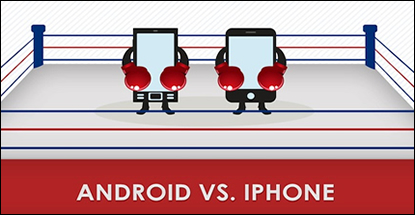If you don’t want to think twice about the safety of the mobile apps you download to your phone or tablet, you might opt for an iPhone or iPad instead of an Android device. Take that with a grain of sensible salt if you will, but it’s the takeaway from the infographic below, created by online/mobile gaming site Ladbrokes Games.
According to Ladbrokes, three out of four smartphone malware applications target Android devices, and Google does little to screen apps on the Google Play app store unless they are already reported by users. Apple, on the other hand, vets each of its apps so carefully that it has often been criticized for playing the role of heavy-handed app authoritarian.
Malware in Apple vs Android security
But how prevalent is mobile malware? It might surprise you to know that the majority of the best-selling Android and iOS apps have “evil twins” — hacker-created malware versions that make their way onto torrent download sites and occasionally onto official app stores like Google Play. Every one of the one hundred top paid Android apps have hacked versions, and 80% of Android’s top 15 free apps have hacked versions, according to the infographic. In iOS, those numbers are a bit lower at 92% of the top paid apps, and 40% of the top free apps.
Hackers are more likely to target Android apps because there are many more Android users than iOS users, and there are many more official and unofficial Android app stores.
Should you be worried if you’re an Android user? Not if you’re smart about only using trusted app stores, and stay away from questionable apps with no past download history or reviews. Not everyone will be so smart or careful, so hackers will always have a target. Just don’t be it. Infographic below.
Apple vs Android security infographic:

Apple vs Android security infographic





